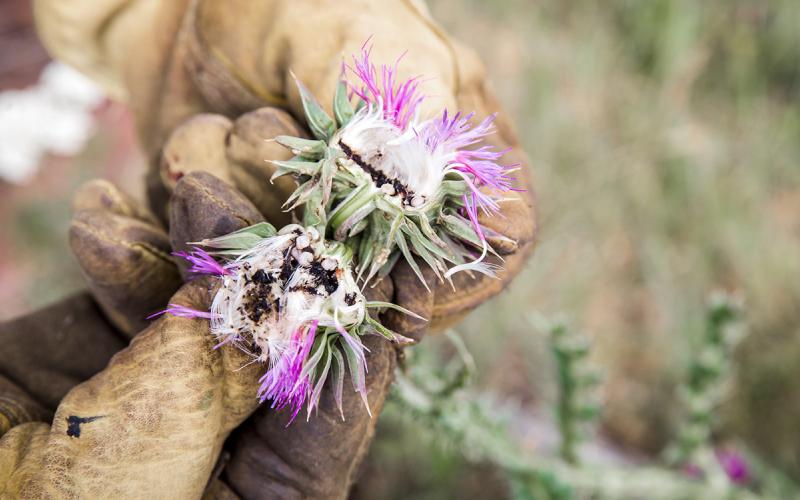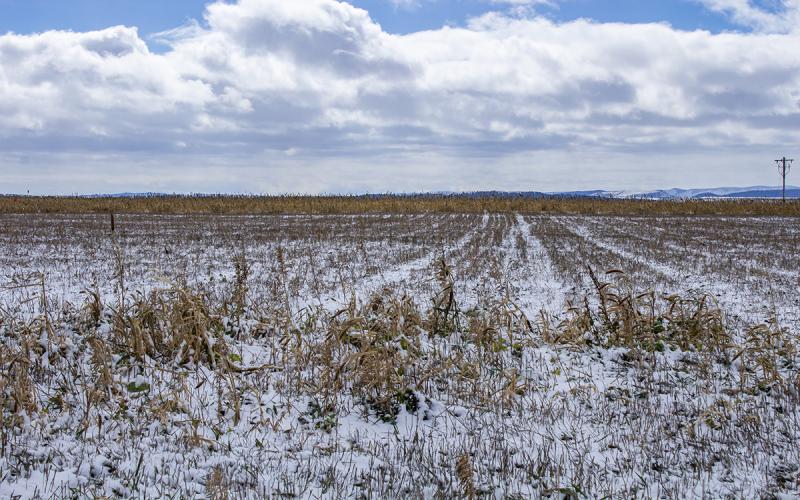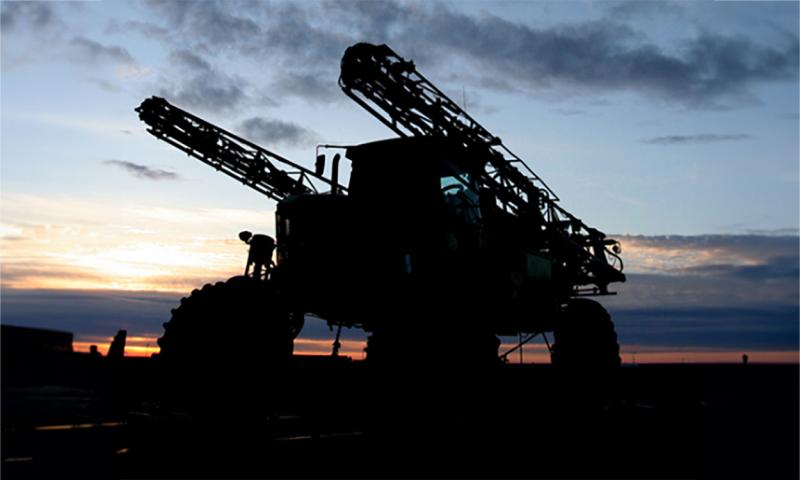
Written collaboratively by Eric Jones, Philip Rozeboom, Jill Alms, and David Vos.
Chemical weed management in corn relies heavily on HPPD inhibitors (Group 27) pre-and-postemergence. Such herbicides include: mesotrione (Callisto), isoxaflutole (Balance), tembotrione (Laudis) and topramezone (Armezon, Impact). These herbicides are effective on many weed species and are safe on corn when applied properly. However, recurrently applying the same herbicide group will eventually select for resistant weeds. This selection pressure is evident with glyphosate across the United States. Glyphosate was very effective on weeds and very safe on crops; three glyphosate (Roundup) (Group 9) applications were not uncommon in a growing season. However, from the introduction of glyphosate-tolerant crops (Roundup Ready) in 1996, glyphosate-resistant weeds became a widespread problem about 10 years later. While resistance to the HPPD inhibitors has not been confirmed in South Dakota yet, continuous reliance will eventually select for weeds resistant to this herbicide group. Resistance to HPPD inhibitors has been confirmed in neighboring states (Nebraska and Iowa). Personally, I have experience working with HPPD inhibitor resistance in waterhemp from Iowa (Iowa State University) and North Carolina (North Carolina State University). While losing one herbicide group to resistance is a challenge, many weeds that are resistant to HPPD inhibitors are resistant to other herbicides as well. In Iowa, many of the waterhemp populations that were resistant to HPPD inhibitors were also resistant to atrazine (Group 5), glyphosate, and ALS inhibitors (Group 2). Some populations were even resistant to PPO inhibitors (Group 14), resulting in resistance to 5 herbicide groups! At that point, there really are few options to manage these populations.
Past Herbicide Program Insights
The SDSU Extension Weed Science program conducts herbicide demonstrations in corn every year at three locations. While examining the herbicide programs to be included in the corn herbicide demonstration, I again noticed that many of the programs included a Group 27 herbicide in the pre-and-postemergence application. Since I have dealt with HPPD resistance and do not want the farmers of South Dakota to deal with this problem (kochia and waterhemp are already difficult to manage), I decided to include some older herbicide programs that probably haven’t been commonly applied to corn in at least 20 years. While looking through historical weed management from SDSU Extension, I came across publications from 1949 titled “Chemical Control of Weeds in South Dakota” and 1959 titled “Weed Control in Field Crops” (Figure 1).
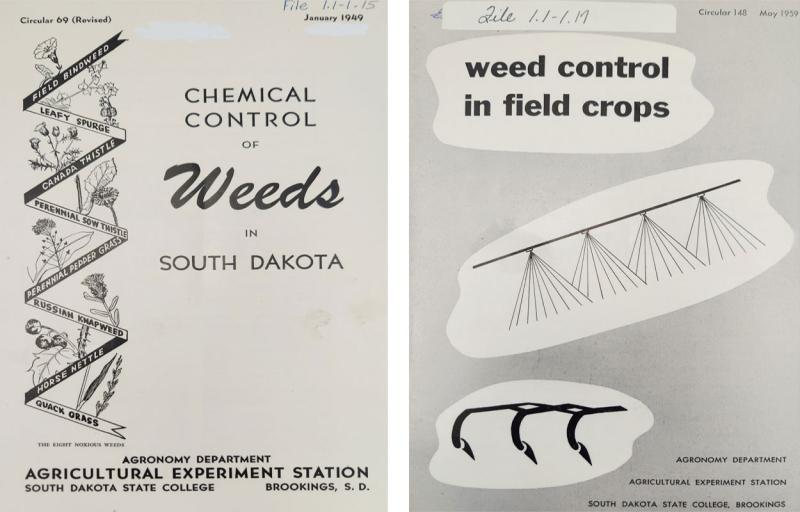
The herbicide that was recommended for weed management in corn was 2,4-D (Group 4), but it came with the caveat that injury can occur with higher rates that were needed to manage perennial weeds. 2,4-D was the main herbicide for corn weed management until the 1960s with the introduction of atrazine, and the 1970s to 1990s were a time when a new herbicide active ingredient or group was discovered regularly. While 2,4-D and dicamba can be injurious on corn, tank mixtures with atrazine (the old Marksman [dicamba + atrazine] and Shotgun [2,4-D + atrazine]) can be effective on many weed species and reduce the selection pressure on the HPPD inhibitors.
The herbicide programs are provided in Table 1. Glyphosate was added to each program to help manage grass weeds, as Group 4 herbicides and atrazine have little activity on grass weeds postemergence. The herbicide programs were applied at an output of 20 gallons per acre when the corn was approximately at the V4 stage.
|
|
|
||
| Herbicide/Adjuvant | Rate | Herbicide/Adjuvant | Rate |
| 2,4-D amine 3.8 | 16 fl oz per acre | Clarity | 16 fl oz per acre |
| Atrazine 4L | 16 fl oz per acre | Atrazine 4L | 16 fl oz per acre |
| Roundup Powermax3 | 30 fl oz per acre | Roundup Powermax3 | 30 fl oz per acre |
| Crop oil | 1% of sprayer volume | Crop oil | 1% of sprayer volume |
*The rates applied are provided for each herbicide. The herbicide programs were applied to V4 to V5 corn at an output of 20 gallons per acre.
Crop Response and Weed Control
While evaluating the crop response and weed control with these herbicide programs, the same warnings of crop injury and weed control with higher rates of 2,4-D (and dicamba) still hold true today. Malformed brace roots, goose-necked corn, and lodged corn plants were evident in the plots that were treated with these herbicide programs (Figure 2). In each plot, approximately 20% of the plants were affected. However, all weeds were effectively managed in the plots that were sprayed with these treatments (Figure 3).
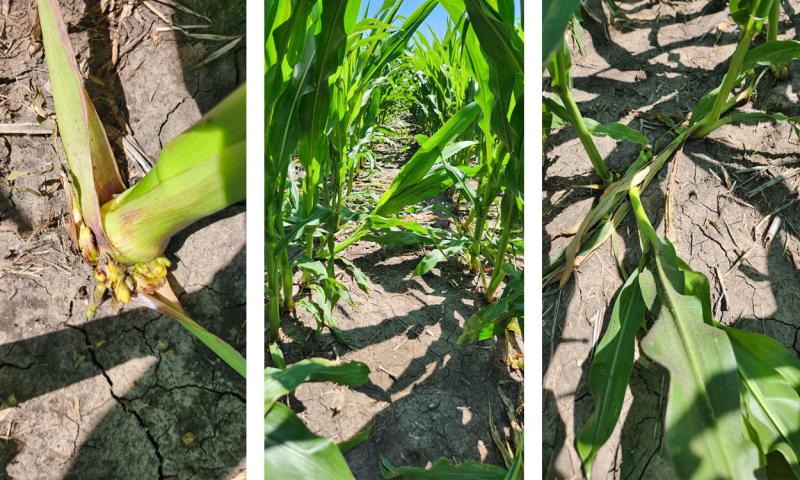
The takeaway from this information should be that there are effective options aside from HPPD inhibitors to manage weeds, but caution may be needed to ensure there is no injury to the corn crop. While a yield loss may occur from lodging of 20% of the corn plants in the plot, the other downside is that there is a potential for decreased canopy closure for competition on emerged weeds or shading to minimize the amount of later-emerging weeds. Additionally, I selected the maximum labeled rates of 2,4-D and dicamba. I also selected for an application timing that coincided with the latest size that corn could be treated (8 inches in height; approximately V4). Reduced rates could be utilized based on crop stage, weed size, and weed pressure. However, applying close to the maximum labeled rate on smaller corn (4 inches in height) is likely a wiser practice. Dicamba + atrazine may be a less injurious tank mixture than 2,4-D + atrazine. While Shotgun (2,4-D + atrazine) was once available as a premix, many 2,4-D herbicide labels discourage mixing with atrazine at the postemergence timing due to potential injury (as seen in Figure 3).
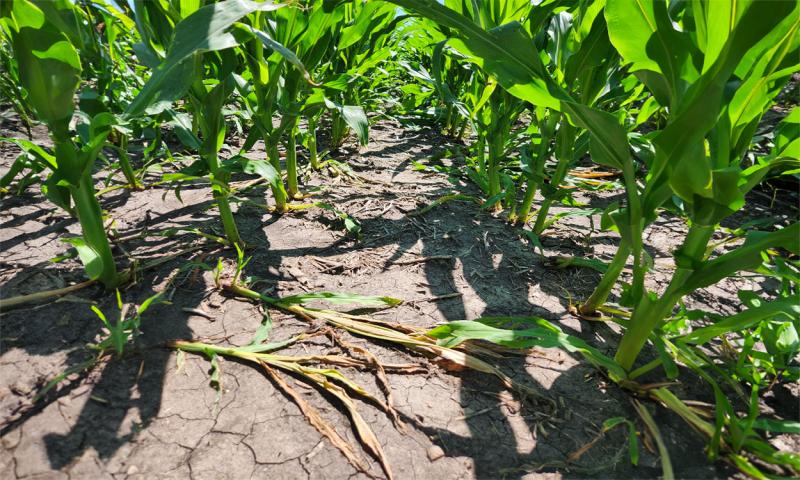
There are safened formulations of dicamba (DiFlexx) that can be less injurious to corn and can be tank mixed with atrazine. Additionally, the atrazine rate was at one half pound per acre. The premixed formulation of dicamba + atrazine (Marksman, 3.5 pints per acre) include approximately one pound of atrazine per acre. While that rate of atrazine may be more effective, there is a risk of carryover to susceptible crops grown in the subsequent season. Atrazine applied postemergence also requires the addition of crop oil. Adding crop oil to these tank mixtures may have increased the injury to the corn crop.
The Bottom Line
While 2,4-D or dicamba mixed with atrazine and glyphosate (or alone for that matter) are not likely going to replace common postemergence herbicide programs in corn, this can be reminder that we may have to utilize older herbicide programs to manage weeds to reduce the selection on the few effective and safe herbicides (the HPPD inhibitors) remaining. Refer to the latest South Dakota Pest Management Guides and Weed Control Field Test Data to see a compilation of various herbicides and the effectiveness on various weed species. Crop rotation will be critical for weed management, as other herbicides and non-chemical tactics can be utilized; continuous corn with pre-and-postemergence applications of HPPD inhibitors is a recipe to rapidly select for resistant weeds! The old extension publications (Figure 1) that also sparked my interest in evaluating crop injury and weed management with 2,4-D and dicamba also expressed the importance of utilizing non-chemical tactics as well. Non-chemical tactics are not as efficient as herbicides, but utilizing multiple non-chemical tactics can improve weed management noticeably. While the non-chemical tactics of the 1950s (cultivation and harrowing) are not widely utilized in 2024, the same principles still apply. Corn grown in 20-inch row spacing is likely more competitive with weeds than corn grown in 30-inch row spacing. Any tactic that promotes crop growth and decreases weed growth will be beneficial. If you do decide to try to manage weeds in corn like the 1960s, do so with caution and try to keep tillage at a minimum!
